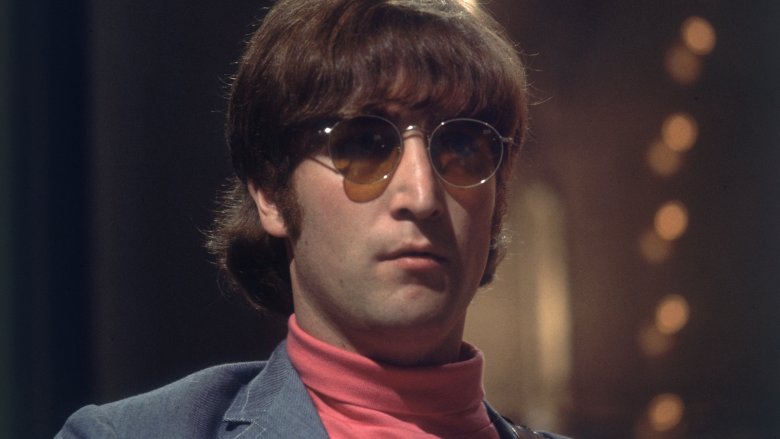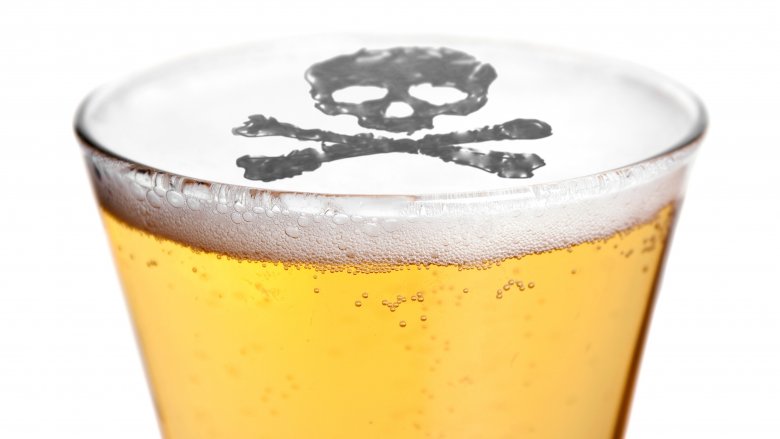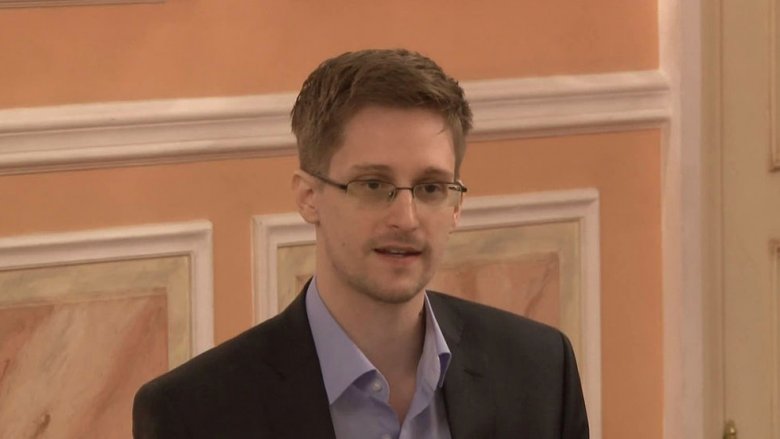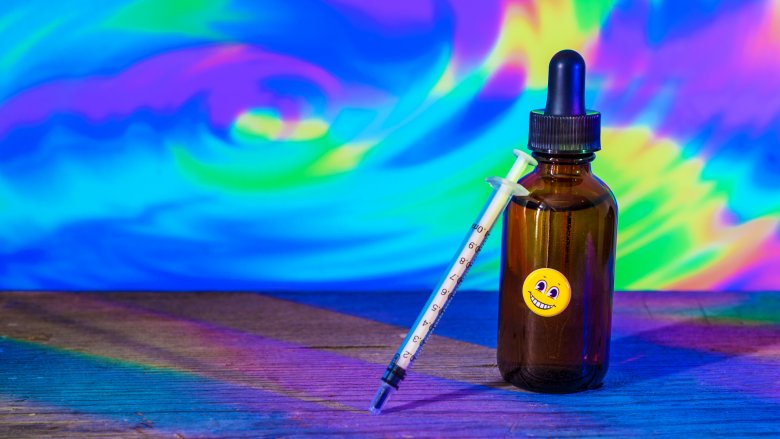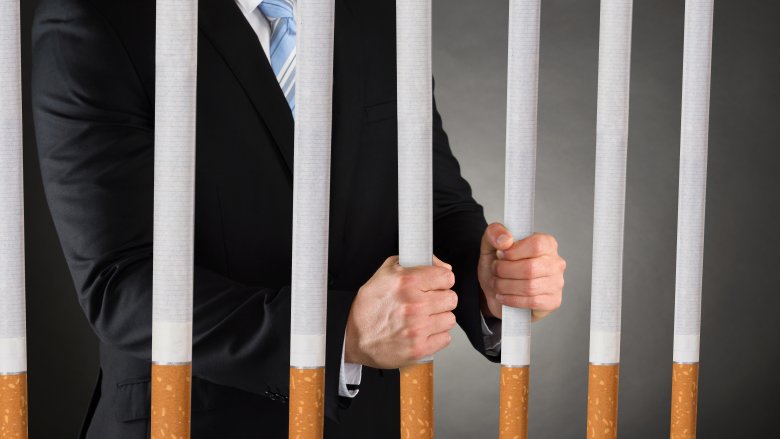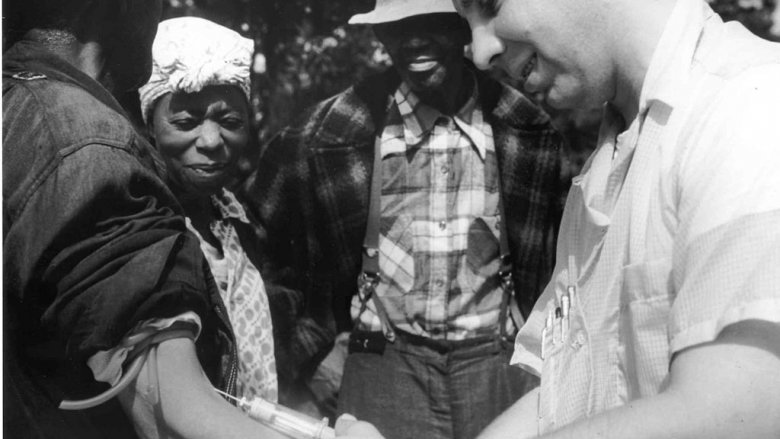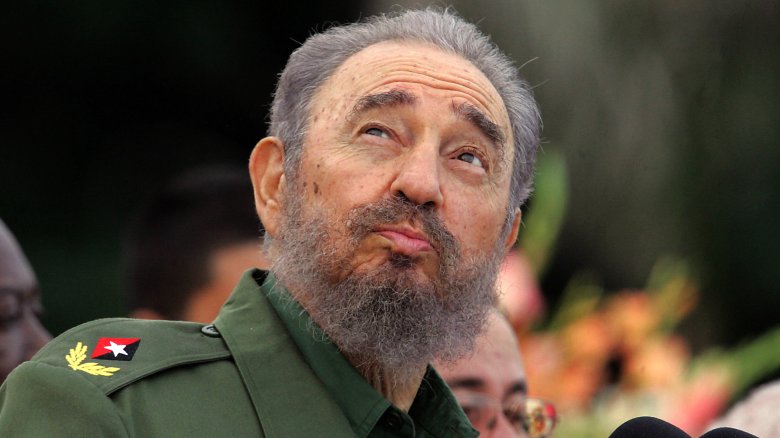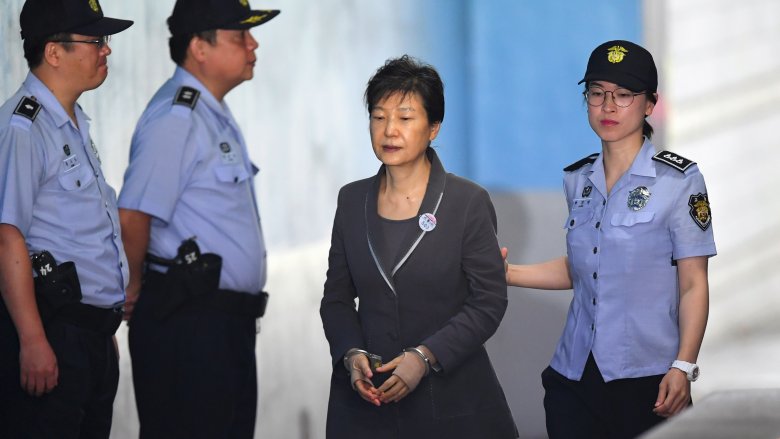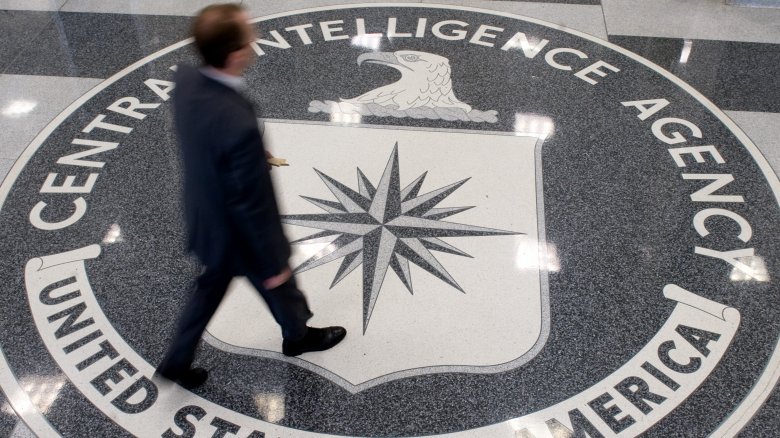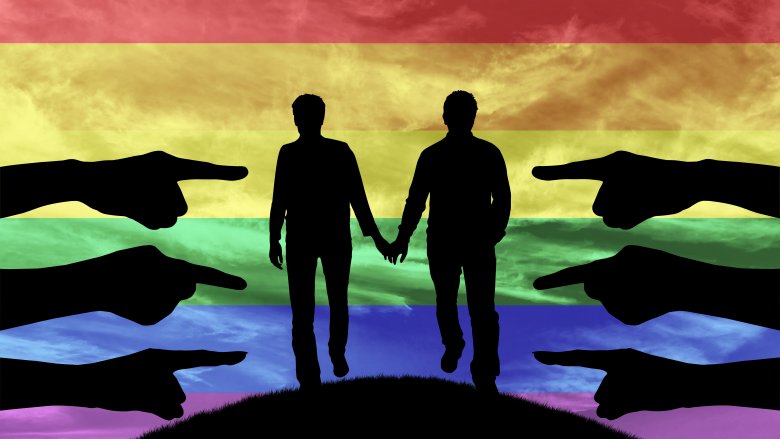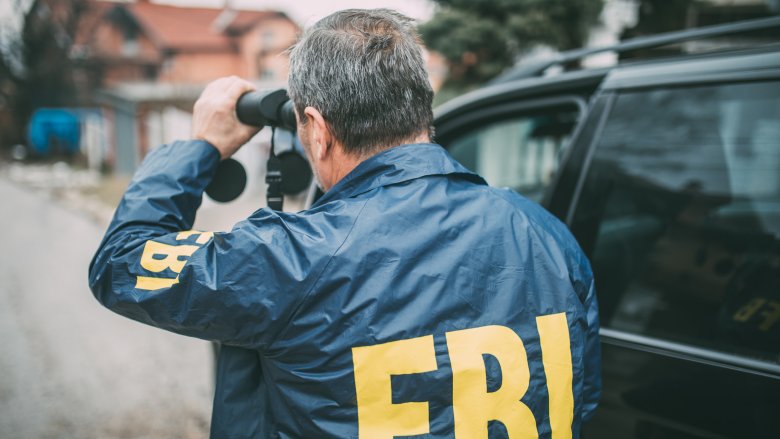Conspiracy Theories That Turned Out To Be True
No, the Earth still isn't flat, the Moon landing probably wasn't faked by Stanley Kubrick, the Illuminati have yet to emerge from the shadows, and if you really think you were abducted by aliens back in the '60s, chances are the CIA just spiked your drink with LSD at some point. No biggie. But don't throw that tin foil hat in the trash just yet; some of the most outlandish and unlikely conspiracy theories ever posited have turned out to be frighteningly accurate over time. Often considered too crazy to be true and dismissed as the paranoid ravings of jittery weirdos, these accounts are now widely acknowledged as real things that actually happened. Really.
Now, don't worry. The foundations of society are still relatively intact, but the following conspiracy theories should still be enough to have you suspicious of everything from the talking heads you see on TV to that cold glass of beer in front of you. Ready your megaphones and wearable sandwich boards!
The poisoning of alcohol during prohibition
Before you even think about cracking open that 90-year-old bottle of moonshine you've been setting aside for a special occasion, you should know there's a good chance it was poisoned by the U.S. government during Prohibition.
That isn't to say government employees were sneaking around in trenchcoats and fedoras spiking martini glasses with little droppers or anything. They didn't directly poison any alcohol meant for consumer consumption, and industrial alcohol manufacturers had already been adding dangerous chemicals to their products to render them unpalatable. But according to Slate, this industrial alcohol had become an indispensable source of booze for bootleggers, and around 60 million gallons annually were stolen, treated, and renatured by the bootleggers' chemists by the mid-1920s. It was then sold to the public living it up in speakeasies around the country, most of whom had no other means of procuring alcohol at the time.
In a hopelessly misguided effort to curb this once and for all, President Buzz Killington — also known as Calvin Coolidge — pushed industrial manufacturers to add lethal toxins like methanol to their products, but the public's thirst for booze showed no signs of abating. Bootlegging continued, plenty of tainted alcohol wasn't successfully renatured, and the public suffered greatly. People got terribly sick, some went blind, and many died. The death toll was said to be around 10,000 by the time Prohibition finally came to an end.
The government is spying on us
NSA whistleblower Edward Snowden dropped a borderline-Orwellian bombshell on conspiracy hounds and regular folks alike in mid-2013. His revelations — first reported by The Guardian — were vast and variously complex, but the bottom line was simple: The U.S. government has been spying on its citizens for years, and didn't even bother to buy us dinner first.
The big, writhing mass at the center of this can of worms was PRISM, a secret espionage program under which the NSA had been monitoring the digital communications of American citizens. With PRISM, the government can pull private user data from companies like Google, Microsoft, and Apple, grossly violating constitutional rights and all but evaporating whatever trust the public had in the NSA. The agency had also been collecting detailed phone records from the public since 2001, intercepting millions of text messages, and even potentially spying on numerous foreign governments and world leaders.
The full extent of this surveillance remains obscured by masses of tangled cables and bureaucratic fog, but what's clear is that it goes way beyond what most people (other than conspiracy theorists) ever expected, and the NSA has been lying about it for years, according to The Atlantic. But despite Snowden's revelations and the burning glare of public scrutiny, the government hasn't really backed off all that much. According to a Facebook transparency report, 78,890 account information requests were made by governments around the world in the first half of 2017 — an all-time high.
The LSD-infused nightmare that was MK-Ultra
The U.S. was steeped in a heavy fog of fear and paranoia at the height of the Cold War, and the government was determined to keep up with Soviet advancements in psychological warfare by any means necessary. So if a few thousand hapless, unwitting Americans needed to be thrown under the bus while the CIA dabbled carelessly (and illegally) with substances they didn't understand, well, that's just how the pot brownie crumbles.
According to witness testimony and classified papers released in 1977 (via Gizmodo), the CIA had been investigating the effects of hallucinogenic drugs like LSD in a wildly unethical series of behavioral modification studies known as Project MK-Ultra. Between 1953 and 1964, drugs were administered to U.S. citizens without their knowledge or consent, and usually without medical supervision, just to see what would happen. Universities, prisons, and hospitals were among the testing grounds, and addicts and terminal cancer patients were among the victims.
At least two people died as a result of these practices. One of them was military scientist Dr. Frank Olson, who descended into paranoia and schizophrenia and then fell to his death from a hotel window in New York a few days after his drink had been spiked with LSD. But this is merely the tip of an iceberg still submerged in darkness — the mass destruction of documents relating to MK-Ultra by CIA director Richard Helms in 1973 means the full extent of the project may never be known.
Big tobacco's big web of lies and deceit
There are some things we just know to be true. The sky is blue, water is wet, and smoking cigarettes causes lung cancer. And while it was the scientific consensus by the 1950s, much of the public was blissfully unaware of the real dangers of smoking. Big tobacco made sure it stayed that way. Two-thirds of men and one-third of women in the United States smoked cigarettes by 1955, according to The Atlantic. Fortunes were being built, and these companies weren't about to let pesky science get in the way of that sweet, sweet cheddar.
With the help of the dapper Don Draper-types churning out ridiculously misleading ads on their behalf, big tobacco tried to convince the public that smoking was actually healthy for a long time. And when they weren't lalala-ing with their fingers in their ears in the face of conclusive scientific evidence, they went out of their way to keep people quiet and suppress research that might hurt their bottom line.
They went on doing this — denying the health risks, misleading the public, and offering bogus "healthier" alternatives (low-tar cigarettes, anyone?) — for years. The U.S. surgeon general definitively stated that smoking can be fatal in 1964, but it wasn't until the late '90s that big tobacco actually acknowledged the health risks. Then in 2006, as reported by the LA Times, a seven-year lawsuit came to an end when Judge Gladys E. Kessler found tobacco companies guilty of conspiracy, having suppressed information and perpetuated nicotine addiction in the process.
The heinous cruelty of the Tuskegee syphilis experiment
A reprehensible chapter in U.S. health care history, the Tuskegee syphilis experiment was every bit as bad as it sounds. Beginning in 1932 but not disclosed fully to the public until 1972, according to Time, the study epitomizes the long and dark history of non-consensual medical research of African-Americans in the U.S. As government conspiracies go, it has to rank among among the most sinister.
Six hundred men were recruited for the "Tuskegee Study of Untreated Syphilis in the Negro Male." Just 399 of them had the disease, while the remaining 201 acted as a control group. They were told they would be treated for "bad blood," but half of them were actually denied treatment so the effects of syphilis could be studied as their conditions worsened. This continued, in secret and unimpeded, even after penicillin had become the accepted treatment of choice for syphilis in 1945.
Initially projected to last six months, the study carried on for another 40 years until the information was leaked to the media in 1972. The damage had been done, however — by the end of the trial, at least 28 men had died of syphilis and related complications.
The staggering implications of Operation Northwoods
As bonkers as some conspiracy theories tend to sound, they often take root largely because of very real historical precedent. The 9/11 "Truther" movement is essentially built on this notion; if the government has considered staging attacks on its own citizens in the past, what's to stop them from doing it again? Operation Northwoods is a frequently cited example of this digression, a chilling reminder of the U.S. government's willingness to deceive and potentially harm its own citizens for political gain.
The threat of communism loomed large in the U.S. in the '50s and '60s, and ol' Fidel Castro in nearby Cuba was a primary concern. So much so, in fact, that the government planned to launch a fake Cuban terror campaign on American soil in order to drum up support for an invasion against them. They weren't just talking smack about Castro around the watercooler — Operation Northwoods was a full-on "false flag" proposal. Plans included the fake bombing of a naval base, plane hijackings, and the sinking of boats carrying Cuban refugees to Florida according to a 1962 document revealed in 1997. Real injuries and fatalities were at least considered a possibility. The document callously mentions "wounding" and the possibility of "real or simulated" casualties with all the gravity of a discussion about the weather.
The operation was ultimately quashed by JFK once he caught wind of it, and conspiracy hounds have latched on to this as a possible motive for his assassination the following year. Naturally.
The bizarre presidential scandal that shook South Korea to its core
You couldn't make some of this stuff up — and if you could, you really need to turn off the Discovery Channel once in a while. In 2016, South Korea bore witness to a bizarre presidential scandal that marked the beginning of the end for the country's first female president, Park Geun-hye. This wasn't just your garden variety political controversy; as reported by Vox, this was a long and storied tale of sinister manipulation, a shamanistic cult leader, and equestrian sports.
In the early 1970s, Park Geun-hye got close to Choi Tae-min, a friend of her military leader father and the founder of a pseudo-Christian cult known as the Church of Eternal Life. After both men had died, the cult leader's daughter Choi Soon-sil remained a permanent fixture in Park's life, ultimately becoming her adviser when she became president. Choi's influence ranged from controlling Park's wardrobe to weighing in on major political decisions, and even using her position to advance her daughter's competitive horse dancing career. The preferential treatment became blatant, and people started to take notice.
Public scrutiny came to a head in October 2016, when a Korean TV network got its hands on Choi's tablet computer and discovered just how much influence she was exerting on the president. Massive public demonstrations followed, Park's approval rating dropped to a dismal 4 percent, and she was impeached in December of that year. It didn't end there; in early 2018, she was ordered to pay $17 million in fines and sentenced to 24 years in prison.
The CIA's complicity in the crack epidemic of the 1980s
It's your not-so-friendly neighborhood CIA again, ruining lives and taking names. It was the 1980s, Reagan was in the White House, crack cocaine was running rampant throughout Los Angeles, and the CIA was partly to blame. According to an extensive 1996 report by journalist Gary Webb, the agency was working with Contra rebels in Nicaragua to ship cocaine into the U.S., enabling the crack epidemic to spread and decimating deprived inner-city areas.
Whether the CIA merely looked the other way or played an active role in the smuggling is still somewhat up in the air, but their complicity is undeniable. A CIA inspector general's report in 1998 denied outright responsibility, but confirmed the CIA was at least aware of the Contras' drug trafficking while they continued to work with them. Webb's report — titled "Dark Alliance" and first published in the San Jose Mercury News — was roundly criticized and discredited at the time. The work was given its due diligence eventually, and his reputation recovered once it became apparent just how much he'd gotten right, but it's said that the whole ordeal destroyed him. He committed suicide in 2004.
If you or anyone you know is having suicidal thoughts, please call the National Suicide Prevention Lifeline at 1-800-273-TALK (8255).
The Canadian government tried to develop an actual gaydar in the '60s
Canada is often seen as something of a vanguard for LGBT rights these days, and with mostly good reason. It was among the first nations to officially recognize same-sex marriage and has typically been ahead of the curve when it comes to things like same-sex adoption and military service. But the country wasn't always setting progressive precedents, and the road to tolerance and equality has been anything but smooth — the development of the "fruit machine" in the '60s is a shameful case in point.
During the Cold War, the Canadian government hired a university professor to develop a technological method of detecting homosexuality in people, according to CBC. Thousands of dollars were poured into this research, and the "fruit machine" was the result. Essentially, subjects were shown pornographic images while cameras monitored their pupils for dilation, apparently indicating arousal, and the intention was to use this method to keep gay people out of public service and the military. Funding was pulled in 1967, but thousands had already lost their jobs. Prime Minister Justin Trudeau delivered an apology to LGBT Canadians in the House of Commons in 2017 for having gone through all this, tearfully lamenting what he called "state-sponsored, systematic oppression and rejection."
COINTELPRO, J Edgar Hoover's illegal surveillance and disruption operation
As told by Esquire, FBI Director J. Edgar Hoover's Counterintelligence Program (COINTELPRO) was launched in 1956 and ran (officially, at least) in secret until 1971. Federal paranoia was dizzyingly rampant, dissident thoughts and communist sympathies were not to be tolerated, and the program vehemently aimed to "expose, disrupt, misdirect, discredit, or otherwise neutralize" any groups or individuals that threatened the status quo. Pro-labor, anti-war, black liberation, and civil rights groups were heavily targeted, and artists and public figures espousing any sort of solidarity with them bore the brunt of the abuse.
The list of those monitored as part of the program is a who's who of 20th-century revolutionaries and countercultural influencers. Among them were Martin Luther King Jr., who was sent an anonymous letter by the feds urging him to commit suicide; John Lennon, whose radical views and affiliations started an arduous 12-month investigation in an attempt to have him deported; and Ernest Hemingway, whose prolonged surveillance has been speculated to have been a significant contributing factor in his eventual suicide, according to The Guardian. Many of the victims were dismissed as needlessly paranoid conspiracy theorists at the time, but those FBI files are now a matter of public record. The truth wins out eventually — or at least it's comforting to think so.
